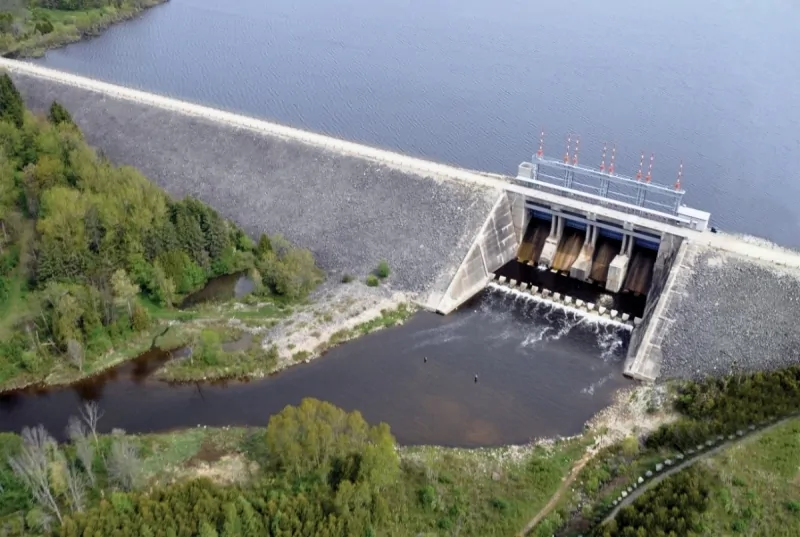Conservation Authorities (CAs) are unique to Ontario. While other agencies aimed at conservation and watershed management exist across the country, Ontario is the only province that has promoted the establishment of conservation authorities through legislation and financial support. Today, over 95 percent of Ontario’s population lives within the borders of a conservation authority’s jurisdiction. Ontario Conservation Authorities protect and manage the impacts on our natural resources in partnership with residents, businesses, not-for-profit organizations, and all levels of government.
For the purposes of this case study, we conducted interviews with three conservation authorities across the province as well as a representative from Conservation Ontario. We spoke with:
- Richard Wyma, General Manager/Secretary-Treasurer of the Essex Region Conservation Authority (ERCA) and Executive Director of the Essex Region Conservation Foundation;
- Carl Jorgensen, General Manager/Secretary-Treasurer of Conservation Sudbury;
- Samantha Lawson, Chief Administrative Officer of the Grand River Conservation Authority (GRCA);
- Lisa Stocco, Manager of Communications of the Grand River Conservation Authority; and
- Kim Gavine, General Manager of Conservation Ontario
This case study provides an overview of conservation authorities in Ontario, including their history, structure, and core mandate. The second half of this case study focuses on influential elements that could be impacting Ontario Conservation Authorities today. The information in this case study is gathered from interviews and other publicly available sources.
History of Ontario Conservation Authorities and The Act
The Conservation Authorities Act, 1946 was adopted by the Province of Ontario to address the province’s depleting natural resources. Between 1930 and 1950, residents and groups came forward with their concerns; poor land, water, and forestry practices had seriously reduced the health of Ontario’s natural resources. In Ontario, the combined impacts of deforestation and drought led to extensive flooding and soil loss. A more integrated watershed management program was required in order to effectively protect Ontario’s natural resources.
The managing of natural resources fell under provincial jurisdiction, however, a number of municipal councils agreed to take on the responsibility. The Conservation Authorities Act highlighted the principles of local initiative, cost sharing, and watershed jurisdiction. The principle of a local initiative meant that a conservation authority could only be formed through citizens’ support to take on the burden of running the corporate body. Municipalities could choose to come together to establish Conservation Authorities with their citizens’ support to contribute financially. The principle of cost-sharing entails cost-sharing across municipalities and the provincial government. Finally, the principle of watershed jurisdiction was adopted to guide the drawing of the conservation authority’s borders. Conservation Authorities were to observe one or more watersheds. This stewardship required that all aspects of conservation in the area were covered.
In accordance with the Act, conservation authorities were charged with a range of program development including:
- Watershed management
- Flood and erosion control and prevention
- Water quality and quantity management
- Conservation land acquisition and management
- Development, interference, and alteration regulation
- Natural heritage protection
- Watershed stewardship
- Technical support for land use planning
- Agricultural stewardship and soil conservation
- Education, recreation, and communication
Today there are 36 CAs in Ontario. The Essex Region Conservation Authority (ERCA) was one of the latest to be formed. It was established in 1973 with support from the Ministry of Natural Resources. In 1975, the Ministry delivered a conservation report for ERCA to provide a full inventory of the natural resources they shall govern and further identify the opportunities and needs that the CA should consider. A major focus for ERCA at the time of its establishment was restoration and stewardship of natural areas. At the time of its establishment, ERCA’s jurisdiction consisted of only 2.5 percent natural area, but thanks to their efforts, over 8.5 percent of the jurisdiction consists of natural area today.
Conservation Sudbury is the operating name of the Nickel District Conservation Authority. It was established in 1973 through the amalgamation of two separate CAs – the Whitson Valley Conservation Authority and the Junction Creek Conservation Authority, which was founded in 1957. Its borders are defined exclusively by three watersheds and they have only one member municipality, the City of Greater Sudbury.
The Grand River Conservation Authority has a long history that precedes the Conservation Authorities Act. In the early 1930s, a group of business leaders came together recognizing that the health of the river had suffered as a result of settlement and industrialization. This threatened the surrounding communities’ economies and the well-being of residents; the river would completely dry up in the summer but would flood the communities that were built along the river in the spring. In 1934, the Grand River Conservation Commission was established and in 1942, they built the Shand Dam. The Shand Dam is a multipurpose reservoir and it was the first dam in Canada that served the purposes of flood control, water supply, and water quality. Shortly after the Act was adopted, in 1948 the Grand Valley Conservation Authority was established and in 1966 it amalgamated with the Grand River Conservation Commission to create the Grand River Conservation Authority.

Credit: Grand River Conservation Authority
Conservation Ontario, established in 1981, is a not-for-profit association that represents all 36 of Ontario’s conservation authorities. It is governed by a Board of Directors and directed by a Council with municipal officials from the conservation authorities. Conservation Ontario takes on the responsibility of:
- Policy review of any proposed policies that could impact CAs
- Government relations
- Communications
- Education and training
- Bulk purchasing
- Collaborative grant applications
- Information management
Structure of The Act
The Act stipulates that conservation authorities must appoint a secretary-treasurer and an advisory board to manage their organization. Additional staff can be hired to take on necessary roles. Today, most Ontario Conservation Authorities have a board of directors that oversees their policies, programs, and budget. The board of directors is made up of representatives that were appointed by the member municipalities. Administration and management are typically guided by a Chief Administration Officer or General Manager/Secretary-Treasurer. Conservation Authorities are not-for-profit organizations, and many are also registered charities. Additionally, the majority of Ontario Conservation Authorities have their own foundation that is a registered charity. The foundations are largely volunteer run and aimed at creating awareness and raising funds to enhance the natural environment and support the conservation authority’s programs.
Each CA is structured slightly differently depending on the number of member municipalities they have. ERCA’s Board of Directors has 19 members from nine municipalities. The municipalities include the City of Windsor and Pelee Island, two upper tier municipalities, and seven other lower tier municipalities within Essex County. They have four representatives from Windsor and two from the seven other municipalities and one from Pelee Island.
Conservation Sudbury is governed by only one municipality, the City of Greater Sudbury. Their board of directors has nine members that are appointed by City Council. Their agreement requires that four of the board members must be from council while five must be citizens that submit their applications to Council. The Board meets at least nine times a year.
The Grand River Conservation Authority’s watershed jurisdiction includes 38 municipalities. The Board of Directors, however, only has 26 members, as the seats are provided on a per capita basis and some smaller municipalities share a representative.
The funding for conservation authorities varies across each organization but is typically derived from four sources: municipal levies, self-generated revenue, provincial grants and special projects, and federal grants and contracts. According to Conservation Ontario, on average, conservation authorities are 53 percent funded by municipal levies, 35 percent funded by self-generated revenue, eight percent funded by provincial grants & special projects, and four percent funded by federal grants or contracts.
These numbers vary quite a bit among the 36 CAs. For example, 70 percent of ERCA’s operating budget is derived from non-levy sources of funding such as self-generated revenue, grants, and support from their foundation. Conversely, over 20 percent of Conservation Sudbury’s budget is supported with provincial and federal transfers and grants while under 25 percent of their budget is support through self-generated revenue. The Grand River Conservation Authority falls in the middle with under 40 percent of their funding coming from municipal levies and around 50 percent derived from self-generated revenue.
The Mandate of Ontario Conservation Authorities
Conservation Ontario defines the core mandate of conservation authorities as the protection of land and residents from flooding and natural hazards through the delivery of watershed-based programs. CAs are meant to enable economic, social, and environmental benefits through the conservation of natural resources. Their objectives include programs that will minimize or prevent the impacts of flooding and erosion and the conservation and restoration of water sources, woodlands, wetlands, natural habitats, and the relationship between people and their natural environment.
Each conservation authority can develop their own plans and prioritize different objectives for their watershed jurisdiction. Essex Region Conservation Authority has jurisdiction over 1,681 square kilometers and manages over 17 square kilometers of natural lands and over 80 kilometers of greenways. ERCA’s strategic goals are to work with partners to plan, adapt, and mitigate impacts of climate change; protect and improve the Great Lakes water quality; restore and preserve their biodiversity and natural heritage; work with partners to plan sustainable communities; and strengthen the CA’s programs and services to respond to needs in the region. These goals are fulfilled through their four departments of watershed management services, conservation services, community outreach services, and corporate services.
Conservation Sudbury has jurisdiction over a 9,150 square kilometer area with a lot of natural area. Conservation Sudbury’s key responsibilities include flood control, hazard land management, environmental education, drinking water source protection, watershed stewardship, and much more. For the public, they formally define the principles on which they operate. These principles include: the promotion of climate change education; partnering, collaborating, and sharing expertise; providing real time service delivery with more advanced technologies; green spaces, clean water, and a healthy environment to attract residents; and maintain a healthy environment to improve the health and well-being of residents.
The Grand River Conservation Authority owns around 200 square kilometers of land, nearly three percent of the land in the Grand River watershed. The CA has a long history in watershed management, and they have a wide range of integrated services that aim to: reduce flood damages; improve water quality; maintain a reliable water source; protect natural areas and biodiversity; provide environmental education; operate conservation areas (parks and trails); and manage other environmentally sensitive lands. Unlike elsewhere in Ontario, the communities do not have a pipeline to the Great Lakes; therefore, residents rely heavily on the Grand River and its tributaries to receive treated wastewater. The river also provides drinking water and groundwater sources for some communities. The Grand River Conservation Authority manages seven multi-purpose reservoirs and a number of small dams and dikes. The seven large multipurpose dams and reservoirs play a vital role in protecting the health and safety of citizens, who depend on effective water quality and quantity management.
Conservation Authorities Today
Conservation authorities have managed Ontario’s watershed for decades and they continue to provide services and programs that are integral to our communities. Over time their roles have evolved, making them key agents in our communities as they conserve and promote our cultural heritage, natural environment, and health and safety. Today they may be impacted by provincial regulation, their partnerships with other organizations, and the changing climate. The following section explores these elements and the potential impacts on conservation authorities in Ontario.
Provincial Changes
On June 6, 2019, the provincial government adopted the More Homes, More Choice Act with the aim to increase affordable housing. Within this Act, 13 Ontario statutes have been amended, one of which is the Conservation Authorities Act. The changes to the Act have the potential to restrict the powers of conversation authorities.
The goal of these amendments is to more clearly define the core responsibilities of CAs, and to increase transparency with respect to municipal funding of these programs. CAs historically have been running programs that aim to conserve, restore, develop, and manage natural resources. The Clean Water Act, 2006, provides CAs with a number of tools to carry out these objectives. Amendments to the act will narrow the focus of the activities CAs perform with the following core mandates:
- Programs and services to address the risk of natural hazards
- Programs and services intended to conserve and manage lands owned or controlled by the CA
- Programs and services related to the CAs responsibilities as the source protection authority under the Clean Water Act, 2006
- Other programs and services prescribed by the regulations
This new focus is likely to limit the financial and staffing resources that CAs can devote to other services outside of the mandatory mandate. To carry-out a non-mandatory mandate which requires municipal funding, the CA must enter into an agreement with the municipality to secure the funding. Furthermore, an investigator will be appointed to inquire into CA operations and finances.
Regulations will soon be released that further define the changes laid out in the More Homes, More Choice Act. The new regulations will specify the core mandate and the rules for establishing a Memoranda of Understanding (MOU) or Agreement with their member municipalities to provide non-core programs. Kim Gavine, the General Manager of Conservation Ontario, confirmed that the Province is consulting with Conservation Ontario and each of the 36 CAs as they develop these new regulations.
Kim Gavine also identified one of the main concerns related to the More Homes, More Choice Act: the option for municipalities to opt-out of certain programs that are not part of the core mandate. If some municipalities opt-in while others opt-out, it removes the critical framework designed by the natural watershed. Residents within the same watershed may no longer receive the same services, some areas may experience negative externalities from the municipalities that do not participate, and there could be incomplete data sets and information if not all municipalities participate.
Accompanying the regulatory changes in 2019 were budget cuts. The More Homes, More Choice Act is intended to reduce spending and increase efficiency. The provincial government has suggested that conservation authorities “wind down” on services and not increase any fees. This suggestion came after the Province cut 50 percent of their provincial transfers. The Province transfers $7.4 million to Ontario’s 36 CAs every year for their flood management programs, but this year the amount was halved leaving CAs with an unexpected budget shortage. It is worth noting that the provincial allocation has not increased since the mid 1990s and therefore was already failing to efficiently support their flood management programs.
The provincial government is hoping to reduce their sizeable deficit; however, the costs have fallen on other public agencies. Many CAs had to pull money from their reserves or request more money from their municipalities to make up for the provincial cuts this year. Flood management is the top priority for conservation authorities as it is part of their core mandate defined by provincial regulation and flooding events have become more intense and frequent across the province this year. For these reasons, it was not a program that could go unfunded.
The Great Lakes have reached record-breaking high water levels and conservation authorities’ responsibilities to forecast flooding, issue warnings, monitor water levels, regulate floodplain lands, educate the public, and reduce the impacts of flooding are more important today than ever before. As a result of both regulatory requirements and budget restraints, conservation authorities will likely have to restructure their finances and reconsider the delivery of certain programs in the near future.
Partnerships
Conservation authorities depend heavily on their partnerships with public and private sector organizations. The most important partnership is with their member municipalities. The municipalities within their watershed jurisdiction came together initially to found the CA, they contribute a large portion of CA budgets, and they make up the board of directors. Municipalities and CAs have a very close working relationship. Conservation authorities deliver programs based on the needs established by the municipalities. Furthermore, municipalities often rely heavily on the expertise of CAs for flood forecasting, emergency planning, municipal planning, technical reports, and more.
Conservation authorities have long been dedicated to transparency and consistency, as the More Homes, More Choice Act encourages. CAs work closely with their member municipalities to determine their core programs, submit a budget, and share critical data and information. As technological opportunities emerge, CAs are expanding their software programs related to monitoring and GIS to increase efficiency and transparency. For example, the Grand River Conservation Authority works to increase transparency on an ongoing basis by sharing more information with the public on their website. Through an open data license, a significant portion of the data and information they gather on their watershed areas are available online, including a Grand River Simulation Model.
Ontario conservation authorities and member municipalities may also collaborate to deliver programs or capital projects in partnerships. This year Conservation Sudbury and the City of Greater Sudbury unveiled a Low Impact Development (LID) Retrofit Project that captures water from the parking lot of a sports complex, cleans the water and slows down the flow as it is discharged into a channel.
Since conservation authorities are guided by provincial legislation the province is also a critical partner. The partnerships with the provincial and federal governments are critical, particularly because of the numerous grant opportunities. The National Disaster Mitigation Program (NDMP) is an example of a federal grant that was taken advantage of by several Ontario conservation authorities. The GRCA is currently managing three NDMP-funded projects: The New Hamburg Flood Mitigation Study, the Haldimand County Lake Erie Shoreline Hazard Mapping Update, and the GRCA Floodplain Mapping Updates.
Outside of their governmental partnership, CAs work to a varying degree with a wide range of other organizations such as conservation organizations, academic institutions, local businesses, schools, and each other and neighboring communities. These partnerships support the transfer of knowledge with little to no costs for CAs and are therefore critical to their growth. For example, in the case of ERCA, they have partnered with the United States Fish and Wildlife Service because their priority natural watersheds are part of the Detroit River, a shared body of water.
Climate Change
Under the Conservation Authorities Act, the purpose of CAs was to “further the conservation, restoration, development and management of natural resources in watersheds.” This responsibility directly aligns with flood management and climate change adaptation. In Ontario, communities are struggling with a changing climate as a result of rising temperatures, higher frequency and intensity of precipitation events, and more extreme storm events. These occurrences have resulted in numerous impacts on the natural and built environment, the most notable of which have been from flooding.
Conservation Ontario identifies a list of programs delivered by CAs that help identify and address the impacts of climate change. These programs include watershed planning, watershed monitoring and reporting, agricultural and rural stewardship, stormwater management through low impact development and green infrastructure, flood management, natural heritage protection, and planning and regulations. Whether flooding events are a result of climate change or not, the duty of Conservation Authorities has remained the same and these programs have always been a priority. However, today the delivery of these programs has become more costly and demanding as flooding events continue to occur more often.
The Essex Region Conservation Authority acknowledges the daily impacts of climate change in their region such as more frequent flooding and a stressed biodiversity among other challenges. They are currently working with their member municipalities to develop the Windsor Essex Climate Change Collaboration (WEC3). WEC3 brings together local leaders, experts, stakeholders, and residents in an effort to mitigate the GHG emissions as well as improve community resiliency and adapt to climate change. Richard Wyma, the General Manager of ERCA stated that they are dealing with the impacts of climate change, and flooding in 2019 and previous years has increased the urgency for ERCA and its member municipalities to develop a Climate Change Plan and support adaptation and mitigation efforts.
As previously mentioned, Conservation Sudbury identifies themselves as advocates for climate change adaptation. They are dedicated to supporting climate change adaptation and risk management initiatives. As one of the recipients of the National Disaster Mitigation Program, Conservation Sudbury is redoing their floodplain mapping of the Junction Creek watershed. The information derived from floodplain mapping is crucial to keeping an up-to-date data set for climate projections and planning. Since the CA has always taken a primary role in the municipality’s emergency planning, this information is critical.
The Grand River Conservation Authority has always made watershed management their main focus. In partnership with their municipalities, as well as government agencies and First Nations, they updated the Grand River Water Management Plan five years ago, and most of the identified actions have been implemented since that time. The municipalities continue to depend on the GRCA for flood management as they did when it was first established in 1934. As a long-established authority on watershed management in the area, they have built strong relationships with their municipalities and are respected as a key resource in flood management and adaptation to the potential impacts of climate change.
Conclusion
Conservation authorities in Ontario are known to the public through their parks, education programs, and facilities. Young children are provided a sense of community as they are taught about the natural heritage and they get to explore the province’s biodiversity. However, these programs fail to represent the full repertoire of services provided by CAs in Ontario. Residents’ health, safety, and well-being depend on proper watershed management. CAs are gathering and managing incredible amounts of data as well as managing critical natural and built infrastructure. As new regulations, partnerships, and environmental changes emerge, it is important that we preserve the integrity of Ontario’s conservation authorities and continue to support the delivery of their programs.
ERIN ORR, MA is a Research and Policy Analyst at PSD. She completed her master’s degree from Western University in Political Science, specializing in Canadian Politics. She also completed an Honors Specialization in Political Science at Western University. In her role at PSD, Erin is responsible for conducting research as it relates to public policy, asset management, and sustainability. Her work focuses on the integration of asset management and climate change adaptation practices. She can be reached at [email protected].



